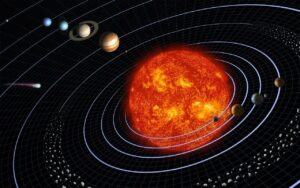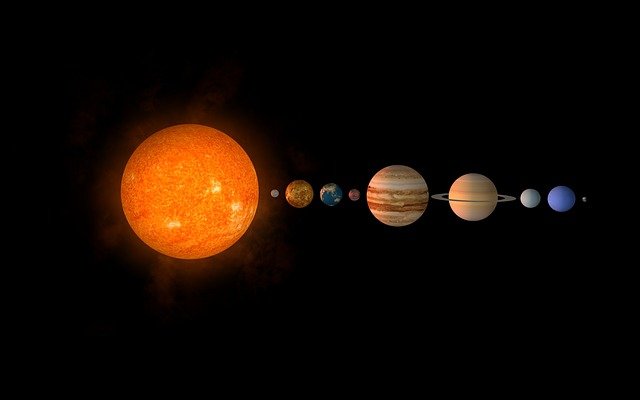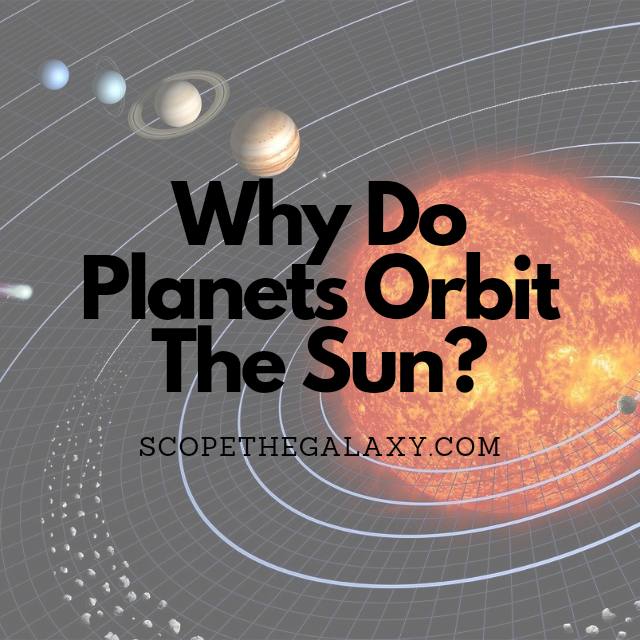*This post may contain affiliate links. This means we may make a commission if you purchase an item using one of our links*
There is a balance between the gravitational force of the Sun and the planets, which causes them to orbit. The planets are not just going around in circles. They are moving in ellipses, which means they move closer to and farther away from the Sun as they orbit.
Continue reading to discover how the planets orbit the Sun and whether they all follow a circular path. Learn what an ecliptic plane is, why the solar system is heliocentric, and the answers to many more of your orbital questions.
How Do Planets Orbit The Sun?
Table of Contents
The Milky Way formed from a rotating cloud filled with dust and gas; in the center, our Sun began to form. Each planet was created within the rotating disc with a momentum that continues today. The planets maintain their orbits because no other force in our Solar System can stop them.
The Sun sits at the center of the Milky Way. It has a gravitational pull on all the planets and other things that orbit it. The planets’ orbits are shaped like ellipses, which means they are not circles around the Sun. The perihelion is the point in a planet’s orbit at which it is closest to the Sun; the aphelion is the point when it is farthest away.
The reason why the solar system is heliocentric is because of gravity. The Sun; possesses a far greater mass than any of the planets, so it exerts a greater gravitational pull on them.
Do All Planets Orbit The Sun In A Circular Pattern?

No, not all planets orbit the Sun in a circular pattern. Each planet orbits the Sun via an elliptical pattern, some to a more considerable degree (or eccentricity) than others. A circular orbit is an orbit in which the object follows a circular path around a central point.
Objects in circular orbits are often not at the same distance from the central point. The shape of their orbit is determined by their relative speed and the gravitational force of attraction between them and the central point.
The planets with the least eccentric orbit (and are, therefore, the closest to a circular orbit) are Neptune, Venus, and Earth.
An elliptical orbit is an orbit in which the orbiting object follows a path that looks more like an oval. In an elliptical orbit, the orbiting object is not always at the same distance from the center of gravity.
The shape of an elliptical orbit can be described as a flattened circle or oval. It is also possible for other shapes to be created, such as two circles overlapping or one circle with another circle inside. The planets that have the most eccentric orbit are Mercury and Pluto.
Why Don’t Planets Get Closer To The Sun When Orbiting It?
Planets and stars are held in their orbits by a force called gravity. Gravity keeps Earth from flying off into space and keeps the moon in orbit around us. It requires significant energy to get an object to move away from a planet or star and even more energy to move closer to another planet or star.
The Earth and other planets in the solar system orbit around the Sun; this orbit relies on a set of physical forces that continuously fight against the laws of motion.
A planet’s momentum makes them want to continue its path of travel in a straight line, but the gravity of the Sun prevents this and pulls the orbiting body closer. As the planet moves closer to the Sun, it gains enough additional speed to pull away slightly; still, once it moves away, it loses momentum, slows down, and is drawn closer to the Sun once more.
This continuous process keeps the planets in orbit, which is why planets don’t get closer (overall) to the Sun when they orbit it.
Do The Planets Orbit The Sun On A Flat Plane?

The ecliptic plane is a flat surface in the sky that the planets travel on; its incline sits at 23.5 degrees from Earth’s equator. All planets, asteroids, comets, and other objects in our solar system orbit around this plane.
In astronomy, an ecliptic is a great circle on Earth’s celestial sphere (i.e., its surface) that marks where the Sun appears to be moving across the sky each day for an observer who lives at Earth’s equator.
The orbits of the planets are elliptical, meaning they are not circular but rather long ovals with two foci—each path and a more or less pronounced eccentricity, which is the deviation from a perfect circle. The eccentricity of a planet’s orbit ranges from zero to one, where one is a straight line, and zero is a perfect circle.
Venus has the least eccentric orbit with a score of 0.007, while Mercury has the highest eccentricity at 0.2056.
But, most of them have their orbits tilted at an angle to our line of sight from Earth. This means that they don’t orbit on the same plane as we see them from Earth – which is why some planets can be seen in our night sky while others cannot.
Summary
Our solar system is heliocentric thanks to the massive pull of gravity exerted by the Sun. Just as Earth’s gravity helps to maintain the orbit of satellites such as the moon, the Sun provides the same stable force for our planets. They do not fall into this massive star because they travel fast enough to “miss” it and fall around the Sun as a continuous orbit.
References
How do the planets stay in orbit around the Sun? | Cool Cosmos (caltech.edu)
| How Things Fly (si.edu)
Why do planets orbit the Sun but don’t get closer to it? – Quora
Orbits and the Ecliptic Plane (gsu.edu)

